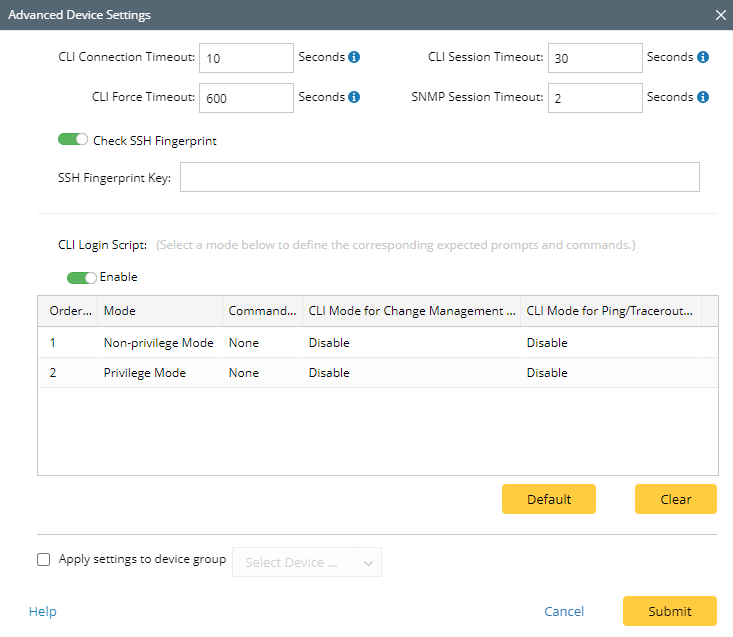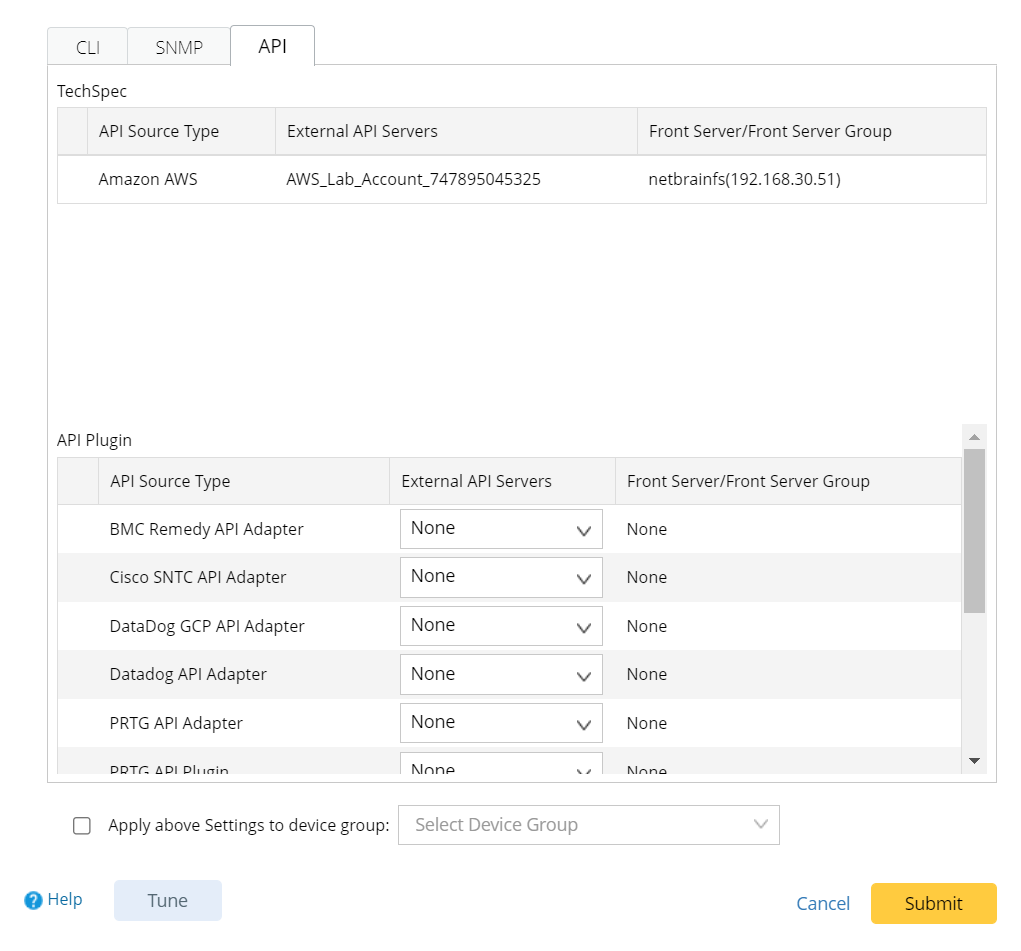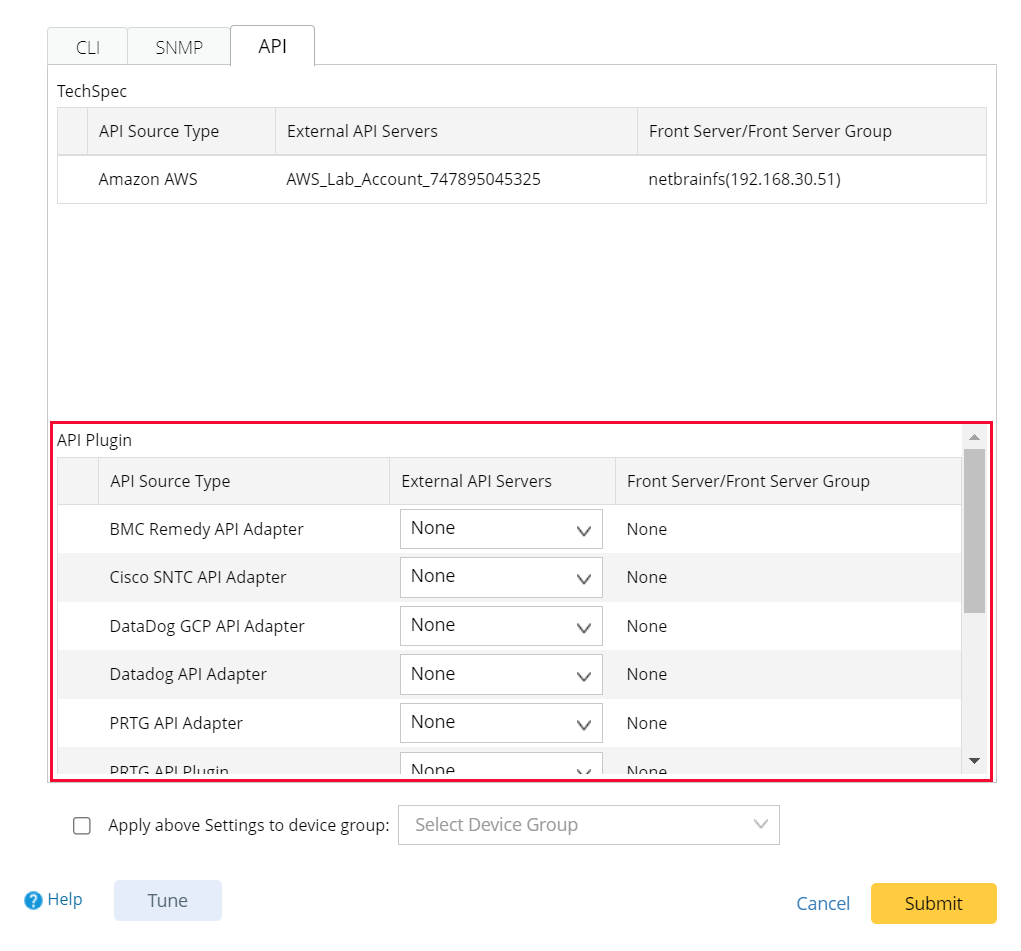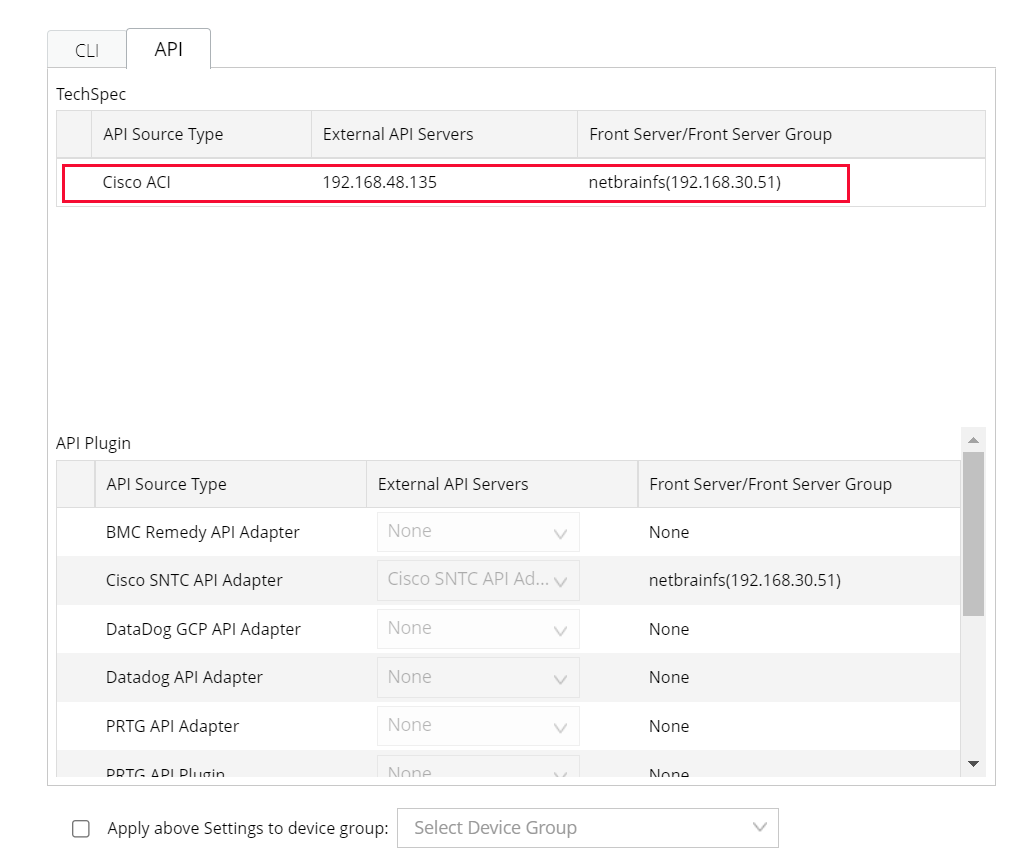| CLI | Used to specify the mode and required parameters to access the device via Telnet or SSH. This method contains the following two modes (Direct Access Mode and Via Other Devices) and corresponding parameters: Direct Access Mode — access the device directly to retrieve data. - Access Mode/Port — the mode and the corresponding port to access a device, including Telnet, SSH, and SSH Public Key.
- Username/Password — the username and password for Telnet/SSH login. By default, the password is not displayed in UI.
- Change Password? — If you want to change the password, select this check box. The area for entering the password is displayed.
 - Privilege Username/Password — the username and password to enter the privilege mode. By default, the password is not displayed in UI.
- Change Privilege Password? — If you want to change the privilege password, select this check box. The area for entering the password is displayed.
- Jumpbox for FS — select a jumpbox if the device cannot be accessed directly via the Front Server (FS). The Jumpbox must be predefined in the Network Settings.
- Interactive Commands — customize the interactive CLI prompts and responsive commands for this device. Besides the existing two pairs, you can add more pairs. For detailed rules and formats, refer to Prompt and Command Definition in GUI.

|
Note: To define the generic interactive commands for devices that use the same driver, refer to Device Driver.
|
- Prompt Settings — customize the advanced CLI prompts and commands. See Configuring CLI Prompts for more details.
- Advanced Settings — set more details for CLI device access, such as the CLI connection timeout, SSH fingerprint key, way of creating CLI login script.

Via Other Devices — access the device through another device to retrieve data, for example, the parent device of a virtual device. |
| SNMP | Used to specify the mode and required parameters to access the device via SNMP. This method contains the following two modes (Direct Access Mode and Via Other Devices) and corresponding parameters: Direct Access Mode — the mode of SNMP access. - Port — the SNMP protocol port number.
- Available SNMP Credentials — the available credentials for SNMP. Alias, not the real SNMP strings, are displayed in the drop-down box.
- SNMP v1 and v2c/SNMP v3 — the version of SNMP. Select the Change SNMP Read Only Community String check box to change the string. The string is displayed in masking mode.
- SNMP v3 — the version of SNMP. SNMPv3 provides a triple security mechanism. You can select one of them.
Via Other Devices — access the device through another device to retrieve data, for example, the parent device of a virtual device.

|
Note: If the virtual child device has different SNMP attributes from its parent device, you can click Advanced to customize the SNMP information of the child device.
|
The Advanced Settings provides the following options: - Retrieve CPU/Memory — specify the SNMP OID used in executing the Qapp Overall Health Monitor [SNMP].
- Customized SNMP Information — if enabled, the customized management IP, live status, version and RO/RW will be used to run an SNMP-based Qapp/Parser when using live data.
|





